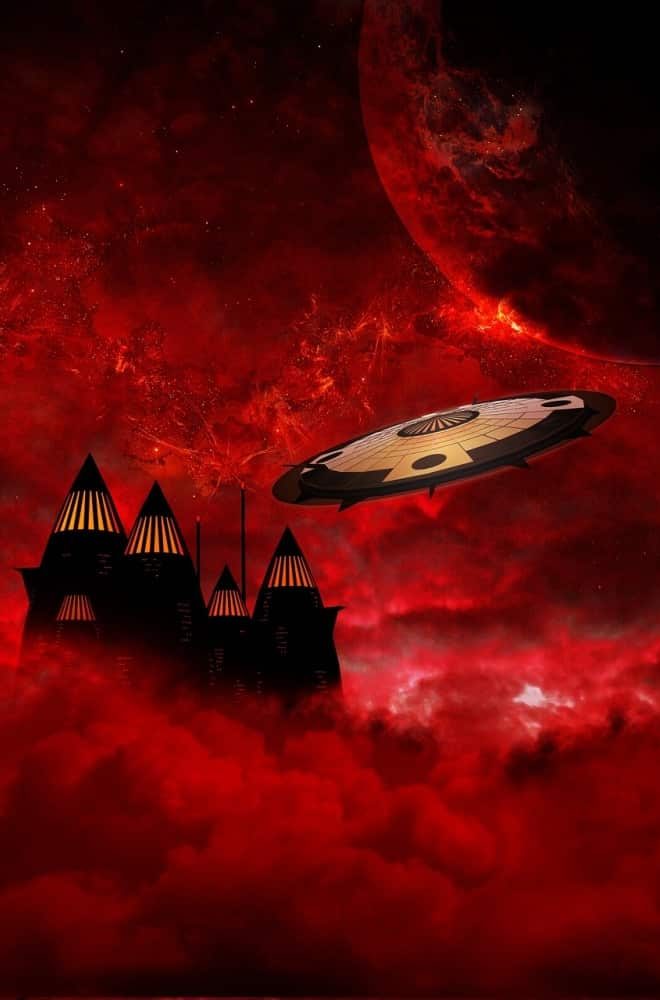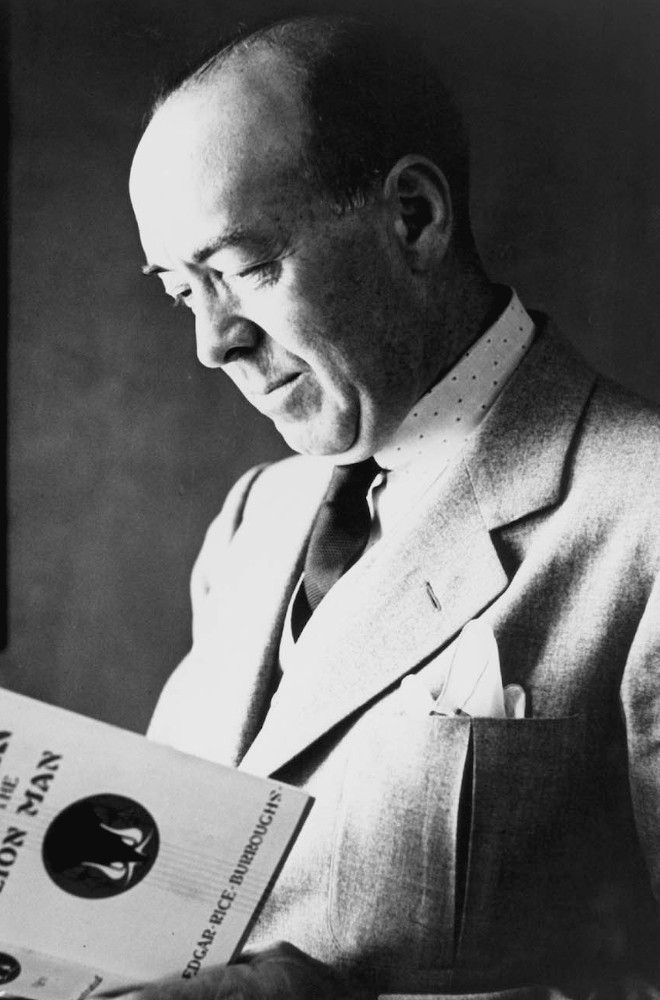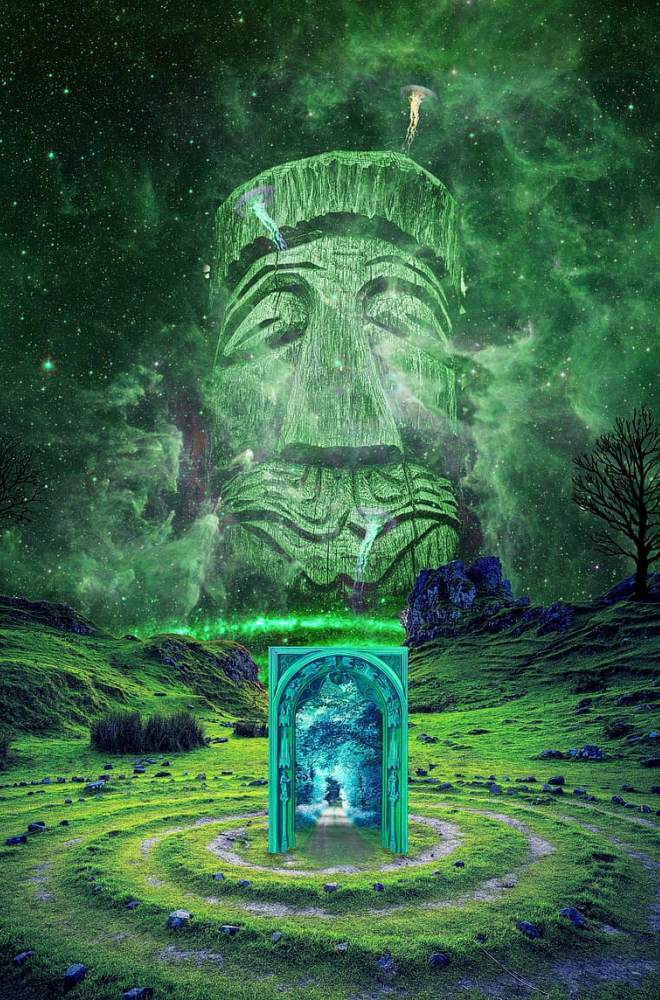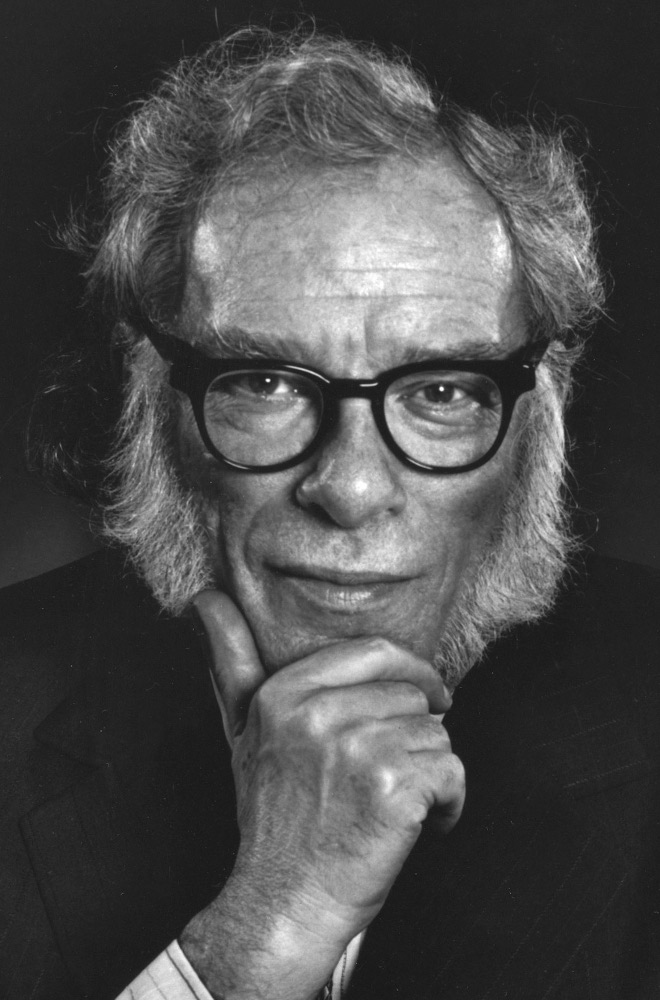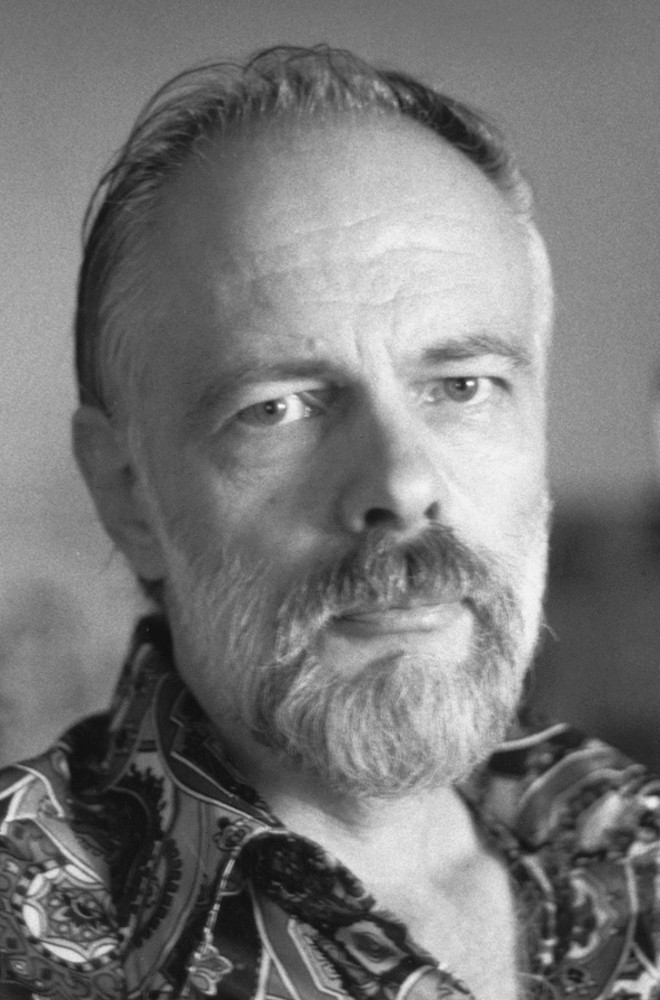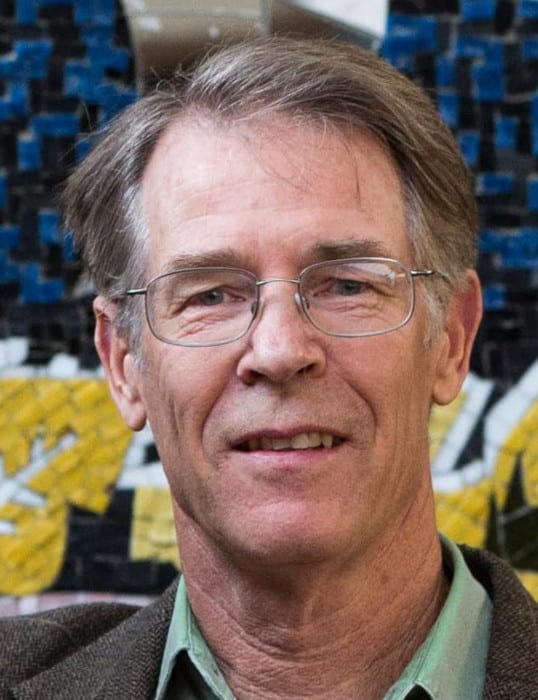 Sci-Fi Master
Sci-Fi Master
Kim Stanley is one of the great science fiction writers of our time. He has written 22 critically acclaimed novels and won numerous awards including the Hugo award for Best Novel, the Nebula Award for best novel, and the World Fantasy Award. His books have been translated into 24 languages and touched the lives of millions of readers.
A specialist in hard sci-fi, Robinson’s work is known for his literary writing style and use of well-researched science. Widely acknowledged as one of the greatest living science fiction writers, Robinson has spent years writing masterpieces of science fiction that delve into ecological and sociological themes, asking important moral questions of his readers.
Best Kim Stanley Robinson Books
| Photo | Title | Rating | Length | Buy |
|---|---|---|---|---|

|
Mars Trilogy | 9.88/10 | 3 Books | Check Price On Amazon |

|
Aurora | 9.76/10 | 512 Pages | Check Price On Amazon |

|
The Ministry for the Future | 9.70/10 | 576 Pages | Check Price On Amazon |

|
The Years of Rice and Salt | 9.62/10 | 784 Pages | Check Price On Amazon |

|
Science in the Capital Series | 9.54/10 | 3 Books | Check Price On Amazon |
Background
Robinson is a writer through and through. He was born in Waukegan, Illinois in 1952 but spent most of his early life in southern California. At the age of 22, he graduated from the University of California with a B.A. in literature, earning his M.A. the following year from Boston University. During his studies he fell in love with, and wrote his doctorate on, the works of Philip K. Dick. This was the beginning of his lifelong love affair with science fiction.
Mars Trilogy
 Colonizing Mars
Colonizing Mars
I must start with what is widely regarded as the best Kim Stanley Robinson series, his Mars Trilogy. This is what he’s best known for, and for good reason. This top ranked series follows the colonization and terraforming of Mars over several generations.
The first book, “Red Mars” is set in the year 2026 and follows the first 100 colonists as they attempt to colonize, and begin terraforming, Mars. In the process, they face violent opposition from those who believe Mars should be left alone. The second book, “Green Mars”, jumps ahead a generation. Mars’s terraforming is well underway, and the book revolves around the political and social implications of the project, exploring the moral implications of what mankind has done to Mars.
War
The third book, “Blue Mars”, jumps ahead centuries. The terraforming and settling of Mars are now complete. The only problem is Earth is falling to ruin thanks to environmental changes and overpopulation. This leads to conflict between those stuck on Earth and those who already live on the now idyllic Mars.
These novels do everything that Robinson is known for doing well and it’s no wonder they’re still the best-selling Kim Stanley Robinson books. They’re complex and thought-provoking with science that feels well-researched and on the cusp of what is possible. Telling exciting stories while exploring the complex ecological and sociological ramifications of man’s actions is what Robinson does best.
Aurora

 Leaving Home
Leaving Home
Aurora is perhaps the best standalone Kim Stanley Robinson book. If the Mars trilogy was about leaving earth, Aurora is about leaving the solar system entirely. It tells the story of a group of colonists sent out on a generational ship on a 170-year journey to Tau Ceti, where the hope is they’ll settle on a habitable planet, dubbed Aurora.
Since no one character would survive this long journey, the novel is told from a mix of perspectives but is mainly limited to the ship’s AI and the main character, Freya. Over the decades the ship’s systems, and the people within it, begin to fail. Unfortunately, when they reach their target, it becomes clear their journey may have been in vain.
Realism
This is hard science fiction at its best. Robinson raises a number of fundamental questions about the challenges of interstellar travel and the ethics of space exploration. We’re so used to science fiction that portrays humanity zipping across the stars, it’s refreshing to see Robinson question if it’s really possible.
Robinson uses the perspective of the AI to give the reader a series of mini-science lectures, making sure we understand some of his more complex theories. Science buffs like me will love it. This is without a doubt one of my top Kim Stanley Robinson books. A thrilling tale that raises tough questions about mankind’s future.
The Ministry for the Future

 Saving the World
Saving the World
The Ministry for the Future is the latest book by Kim Stanley Robinson and as such, of all his books, it feels the most present. Set in an alternate timeline, it follows the creation of a new organization tasked with one job: save the world for future generations.
The book is told through several different eyewitness accounts, following different groups as they try to save the world from ecological disasters. We have Frank May, the traumatized survivor of an ecological disaster, Mary Murphy, head of the Ministry, and the “Children of Kali” an eco-terrorist group who are willing to do whatever it takes to save the environment.
Alternate Timeline
Through his setting of an alternate timeline, Robinson explores a range of technological, political, and economic solutions to climate change, as well as the ethical and moral questions raised by the global response to the crisis. He also delves into the psychological toll of living in a world threatened by climate change, and the challenges of keeping hope in the face of such a daunting problem.
The novel really feels like Robinson’s passion piece/ manifesto. At times, it can seem like he’s more interested in getting his point across than telling a story. It’s still a great piece of hard science fiction, and one of the best Kim Stanley Robinson books, it just isn’t one of his best stories.
The Years of Rice and Salt

 What If?
What If?
Some of the most popular Kim Stanley Robinson books follow “What If” scenarios. This time, rather than looking to the future, Robison looks to the past and asks the question: What if the Black Death had wiped out 99% of the earth’s population during the 14th century?
Robinson explores this interesting premise by following the perspectives of three different souls who are repeatedly reborn over a period of seven centuries. Through their different reincarnations we watch as Christianity is wiped out, Judaism becomes a minor cult, and Buddhism and Islam rise to become the dominant powers.
Evolving Ideologies
Robinson always uses his novels to explore complex themes, and this is true here. Rather than focusing on the bloodshed and calamities that most alternate histories focus on, he chooses to focus on philosophical and religious themes, exploring how theological and political ideologies might have evolved if circumstances had been different.
This is one of Robinson’s slower books. While there is still some action and bloodshed, a lot of time is spent watching his characters as they simply talk things out as they repeatedly meet over the centuries. This doesn’t mean the book is boring, far from it. It offers a sweeping vision of human history that is both familiar and radically different and raises important questions about the nature of civilization, progress, and humanity itself.
Science in the Capital Series
 Near Future
Near Future
A second candidate for the best Kim Stanley Robinson book series is definitely Science in the Capital. Set in Washington, D.C. in the very near future, the series follows the perspectives of several characters who work in, or are connected to, the government’s science agencies, especially the National Science foundation.
These characters have essentially been tasked with saving the world from ecological disasters through the use of cutting-edge science but are constantly held back by politics. As the books go on the ecological stakes become increasingly dire as society careens from one disaster to the next.
Science and Politics
Throughout the series, Robinson investigates a range of scientific and technological solutions to these problems, as well as the political and social barriers that can prevent their implementation. This isn’t just an ecological lecture, however. Robinson still has a story to tell and he delves into the psychological toll working on such complex and daunting issues takes on his characters and how their personal lives and relationships are affected.
The trilogy offers a realistic and scientifically-grounded vision of what the future may hold for us, especially if scientists and politicians don’t learn to play nice with each other. Hopeful and depressing in equal measure, these are some of the best books by Kim Stanley Robinson.
Shaman

 Exploring the Past
Exploring the Past
While Robinson’s fixation on saving us from ecological disaster in the future is admirable, it can grow a little tiresome. For me, what makes “Shaman” one of the best Kim Stanley Robinson novels, is that it’s a breath of fresh air. Instead of a sci-fi exploration of the multitude of ways we’re all doomed, it’s a look into the life of people living in Paleolithic Europe.
The book follows Loon, a rebellious teenager who is training to be his tribe’s next shaman. As Loon navigates the challenges of his training, including hunting, gathering, and taking part in tribal rituals, he also becomes embroiled in a conflict with a neighboring tribe.
World Building
I really enjoyed Robinson’s simpler approach to Shaman. He focuses on fleshing out his characters this time, especially Loon. It’s a joy watching Loon and his family grow and develop. The world-building is typically excellent, but this time Robinson really excels at describing the stark beauty of the Paleolithic landscape and the dangers that hide within its icy desolation.
This is a Robinson book so of course, much like the novel’s icy environment, there’s a lot to delve into below the surface. “Shaman” offers a meditation on the human experience and the evolution of consciousness over time as well as the role of community and tradition in shaping our understanding of the world around us. While some might be disappointed by the novel’s narrower scope compared to some of Robinson’s more ambitious works, I found it refreshing. It’s the best Kim Stanley Robinson book for fans wanting a bit of a change.
New York 2140

 Flooded
Flooded
In New York 2140, one of the latest books by Kim Stanley Robinson, New York has been submerged thanks to the effects of global warming. But it takes more than some flooding to destroy the Big Apple. The city is still a thriving metropolis, now known as a “Super Venice”.
In this “new” New York, the wealthy live on the upper floors, high above the waterline while the less fortunate fight for survival in the flooded lower levels of the city. The novel follows various residents of the Met Life Tower in a series of interconnected narratives.
Short Stories
These narratives act largely as independent short stories. There are the “water rats” (homeless boys) looking for sunken treasure, the head of the co-op who’s fighting off a hostile takeover from a corrupt mega-corporation, and the sleazy day trader trying his hand at altruism to impress a woman, amongst others. The stories are a lot of fun on their own, but the way Robinson ties them together is masterful.
New York 2140 feels a bit like a post-apocalyptic book of fairytales. It offers a compelling vision of a future shaped by climate change that features Robinson’s usual focus on the environment and how we must act now to save it. It’s also a lot more fun and lighthearted (in parts) than his other novels. I highly recommend it.
Antarctica

 Devotion
Devotion
Many of the best Kim Stanley Robinson books are set in the near future. It’s a setting that he keeps returning to and excels at writing. Set on the continent of Antarctica (big surprise), this book follows Wade Norton, who has been tasked with investigating allegations of environmental sabotage.
Norton discovers a strange blend of inhabitants who don’t always get along, but who are all united by their devotion to the land they live on. As Norton’s investigation gets underway, he discovers layers of Antarctic culture that have been long hidden from the rest of the world. Not all of them are friendly to the outside world.
Natural Beauty
Much like in “Shaman”, Robinson does a fantastic job of capturing Antarctica’s icy beauty here. His descriptions of the landscape are stunning and really help explain why some of the region’s inhabitants are willing to go so far to protect it. In many ways, Antarctica feels as alien as the setting of Robinson’s Mars trilogy and Aurora.
Like most of his other novels, at its heart, Antarctica is an environmental cautionary tale. Its characters are well fleshed out and I particularly enjoyed the ticking time bomb aspect of the story after Robinson discovers the existence of Alaska’s “ecoteurs” (eco-terrorists).
Galileo’s Dream

 Mixed Timelines
Mixed Timelines
The best novels by Kim Stanley Robinson tend to be hard sci-fi. This means they’re usually focused on realistic science and scientific accuracy. Galileo’s Dream is a little different. The novel tells two parallel stories: one set in Renaissance Italy, following the life and work of Galileo Galilei, and the other set in the distant future, where a team of scientists tries to make contact with an alien civilization.
In the historical storyline, Galileo becomes embroiled in a range of political and religious conflicts as he develops his groundbreaking theories of astronomy and physics. Along the way, he struggles with personal relationships, including with his daughter and his former student and rival, Johannes Kepler. The future timeline follows an astronomer called Ganymede who travels back in time to meet Galileo while also encountering an alien civilization.
Fun in the Past
I really enjoyed the historical timeline. Robinson’s descriptions of renaissance Italy are vivid, and his characterization of Galileo is deeply entertaining. It’s clear that Robinson has a lot of respect for the historical figure. The future timeline is also a lot of fun but doesn’t feel quite as well flashed out.
Overall, “Galileo’s Dream” is a richly imaginative and thought-provoking novel that offers a compelling vision of the past, present, and future of human civilization. It’s refreshing to see Robinson stretch his legs a little and experiment with aspects of science fiction like the far future, time travel, and alien civilizations. He feels a little out of his comfort zone at times, which stops this from being one of the best-rated Kim Stanley Robinson books, but it is still a great read.
Three Californias Triptych Series
 Different Californias
Different Californias
Robinson’s Three California’s Triptych series is set in three different versions of California, with each one following a different “what if” scenario. The first book is set in a post-apocalyptic California which has been devastated by Nuclear War.
The second book, “The Gold Coast” on the other hand, features a near-future California which has become a wealthy, high-tech dystopia plagued by extreme income inequality. Finally, the third book, “Pacific Edge” is set in a far future version of California that has become a Utopia defined by ecological sustainability and social harmony. Unfortunately, it is being threatened by a resurgence in human greed and exploitation.
Clever World Building
It takes a talented writer to take the same setting and write three vastly different novels about it, but Robinson nails it. You don’t need to read these Kim Stanley Robinson books in order, so just pick up the first one which appeals to you. My personal favorite is The Wild Shore because I’m a fan of all things post-apocalyptic.
This is a unique and thought-provoking series and I really enjoyed how each book explores the possibilities and consequences of different societal paths. Kim Stanley Robinson book reviews tend to praise his exploration of political and environmental issues along with his literary and character-driven writing with a strong emphasis on world-building. All those compliments can easily be applied to this series.
Final Thoughts
It’s easy to see why Robinson is so highly acclaimed. Throughout his career he’s explored complex social, political, and environmental issues, creating thought-provoking stories and characters that resonate with his readers. For fans of hard science fiction, his dedication to scientific accuracy and extensive research is laudable.
Robinson’s work is marked by his optimistic view of the future and his belief in the power of science and human ingenuity to solve the problems facing our world. At the same time, he doesn’t shy away from addressing the challenges and inequalities that exist in our current society. These things are what make him such a visionary writer.
Robert Hazley
Robert is a science fiction and fantasy geek. (He is also the best looking Ereads writer!) Besides reading and writing, he enjoys sports, cosplay, and good food (don't we all?). Currently works as an accountant (would you believe that?)
